I was heading down a little country back road in Kildare on the way to check out the ruins of an old Abbey in Clane, when I came across this stunning little ruin at Bodenstown. The church is surrounded by a graveyard with a rough coursed stone wall with crenelations. So never being one to pass by an opportunity, I pulled in to the verge to have a look around. Bodenstown or Baile Uí Bhuadáin is an old townland just past Sallins in Co. Kildare. Aside from a golf course and the cemetery, there is really nothing else in the area worthy of mention. That said, the graveyard is quite famous as it is the final resting place of Theobald Wolfe Tone. For those whom have not heard of Wolfe Tone he was an eighteenth-century Irish revolutionary and leader of the Society of the United Irishmen and is regarded as the father of Irish republicanism. Each year on the last Sunday of June there is an annual Commemoration which takes place in the graveyard. These commemorations were begun by members of the Irish Republican Brotherhood back in the late nineteenth century and are continued to this day by various Irish Republican Parties.
There are very little details to be found on the history of the church which has been overshadowed by its famous internment, but a scroll dated from 1352AD names the church of Baledwenii / Baldwynii / Baldewnye (Bodenstown) as belonging to the priory of Connell. The Priory of Connell was an Augustinian monastery dedicated to Saint Mary and Saint David, situated on the eastern side of the River Liffey, in the Barony of Connell just to the south-east of the town of Newbridge. This priory was founded about 1202 as a dependency of Llanthony Priory in Wales by the illegitimate grandson of the Angevin King Henry II. The church was still recorded as a possession during the Inquisition of 1606AD. Another record tells that it was still in good condition in 1612AD.
Today all that remains of the church today is the South, West and a partial wall to the north. The east gable foundations are still easily made out. There is a slightly raised, grassed over area to the east which is more than likely the site of the chancel. The Nave is the best surving part of the church with a rather nice round headed doorway. There are three windows within the nave, one round headed window is situated in the west gable wall, the other two one round and the other square headed sit in the south wall. The Nave contains two fragements of what is believed to have been a 13th century baptismal font along with the tomb of Wolfe Tone.
Just south of the church is an open area dedicated to Wolfe Tone with commemorations to Irish nationalists executed in 1922. Tone’s gravestone is within the church ruins The design of the railings that surrounds the memorial stone is said to be taken from the Book Of Kells. The ground surface south of the church is quite even, but to the north it is uneven. The oldest legible grave markers date from the 19th century, but there are clear signs of graves mainly to the north of the church which are many centuries older.
Theobald Wolfe Tone is one of the most commemorated Irish patriots. He was born 20 June 1763. Although his family were Protestants, influenced by the ideals of the American and French Revolutions, he became an ardent advocate of Irish emancipation from British rule. He was one of the founders and leaders of the Society of the United Irishmen, an organisation which, as it’s name implied, included both Catholics and Protestants amongst it’s members. In 1798, anticipating support from Revolutionary forces in France, the United Irishmen organised an doomed uprising against the British occupation. The first action took place in Clane and was a complete failure which led to Tone being captured. He was sentenced to be be hanged on 12 November 1798 but before the sentence was carried out he attempted suicide by opening a vein in his throat with a pen-knife. He died on 19 November 1798 in Provost’s Prison, Dublin and was later buried at Bodenstown. There is a ballad, Bodenstown churchyard, about Wolfe Tone a version is sung by the group named in his honour.
Many visitors began visiting Wolfe Tones grave and some would take away souvenirs. Unfortunately the souvenirs would be a part of the actual memorial itself. It is claimed that small portions of the monument would be chipped off and taken away as a souvenir. After time the memorial looked quiet tattered and certainly not a fitting monument for a leading Irish patriot. In September 1873, the ‘Dublin Wolfe Tone Band’ erected a new memorial over Wolfe Tones grave in Bodenstown. In the same period a monument with an unusual inscription was erected in Mainham graveyard near Clongowes Wood. It commemorates Peter Mackey from Mainham who died in his twenties in 1872 and it consists of two portions, firstly, a base and secondly, a Celtic cross on top. The inscription on the side of the Celtic cross, which in old Irish text reads:
”This cross is carved from the original tomb of Wolfe Tone”
For more of my images, why not visit my Website,or follow me on Facebook, Instagram or Twitter.



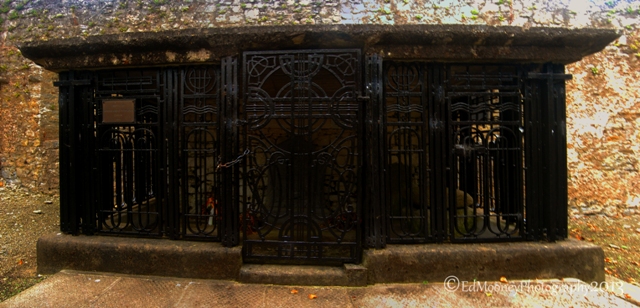


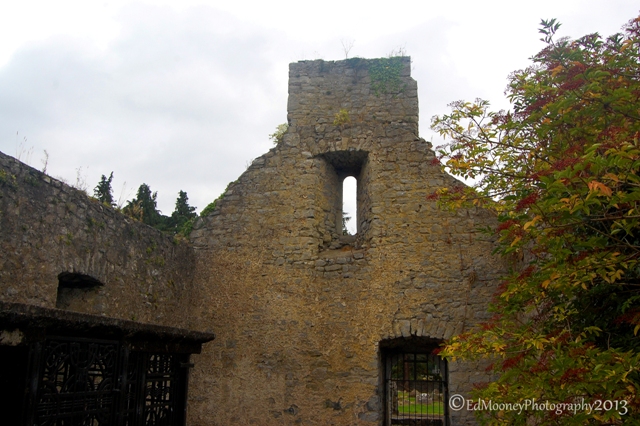






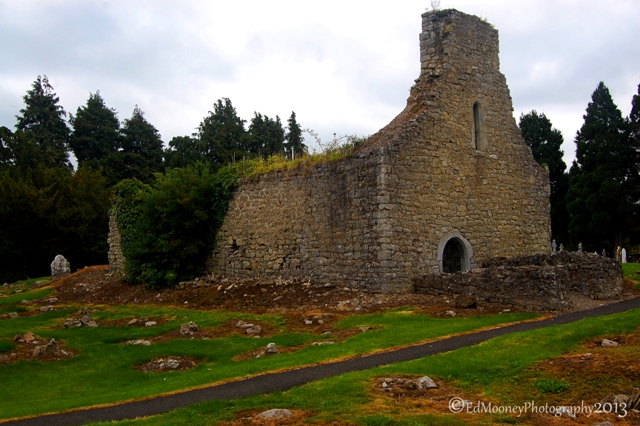
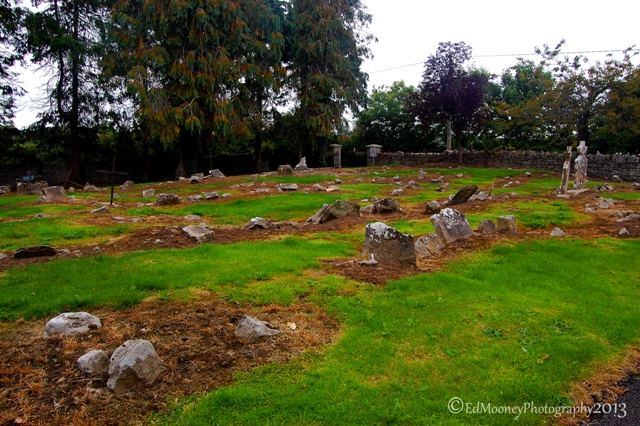
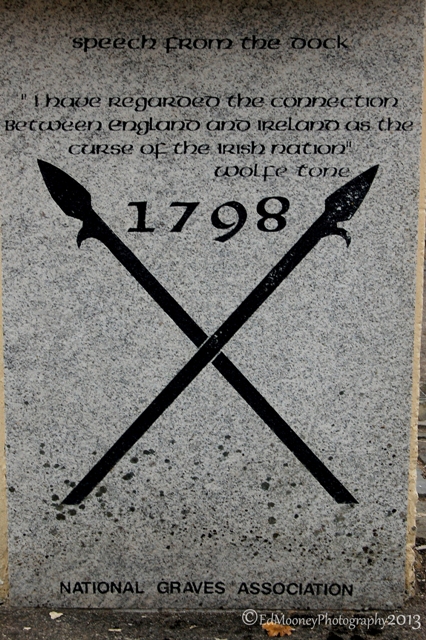







It is a pleasure to read your detailed history of what you are documenting.
LikeLike
Thank you Javier, so glad that people are enjoying these posts as much as I enjoy them, 🙂
LikeLike
Very interesting photographs and commentary. Thank you for sharing.
LikeLike
Why thank you, I just glad that so many people are enjoying them, 🙂
LikeLike
Fascinating story! Fantastic photos!
LikeLike
Ah Thanks 🙂
LikeLike
Fascinating as always Ed 😀
LikeLike
Cheers mate, 🙂
LikeLike
Fascinating! Your history is wonderful and never dull. Great shots too! 🙂
LikeLike
What a pity th decay due to neglect.
LikeLike
Yes, it truly is a shame.
LikeLike
Beautiful shots and another wealth of information – your shots give the idea that Fall is certainly in the air. Thanks!
LikeLike
Thanks Rob, it certainly arrived today with like a kick in the teeth, 🙂 It has gotten so cold today, think I might head out after work today and stock up on some more sites to keep me going through the winter, 🙂
LikeLike
Good idea – I tend to be very unmotivated when i have to deal with the cold (and it’s not even that cold yet!)
LikeLike
My wife says im like a squirrel stock piling before I go into hibernation, LOL
LikeLike
Let ’em laugh as we remain cozy and warm!
LikeLike
🙂
LikeLike
So often when I read your posts, I’m struck by how flimsy the threads that hold us to our history are, how little it would take to lose places back to nature – I really enjoy the pictures, but sometimes I think that recording the places with their people and their stories is even more important, keep it up Ed!
LikeLike
Thanks Anny, That pretty much sums up why I started doing this. There is so much that we have already lost, it would be a shame for what little remains to be lost aswell. Your encouragement is deeply appreciated, 🙂
LikeLike
Great find!
LikeLike
Thanks Sue 🙂
LikeLike
There is a lot of history here, and you’ve captured it well with your selection of photographs. I’d love to see some HDR shots of this area.
LikeLike
Thanks R.C. I haven’t experimented much with HDR yet. Would love to use it in some of my work, but I would need to get much better at it before I use it on these stunning ruins, 🙂
LikeLike
amazing details about this place and very good pics Ed
LikeLike
Thank you Kavita 🙂
LikeLike
Thanks for stopping by and liking our blog. That gave me the chance to visit yours and read this very interesting post – I love the historical narrative and the beautiful pictures! I’m looking forward to reading more of your posts. Anita @ No Particular Place To Go
LikeLike
Thank you Anita, glad that you enjoyed it, 🙂
LikeLike
Pingback: The Grave of Theobald Wolfe Tone in Bodenstown Co. Kildare, Ireland |
Pingback: Clane Abbey | EdMooneyPhotography